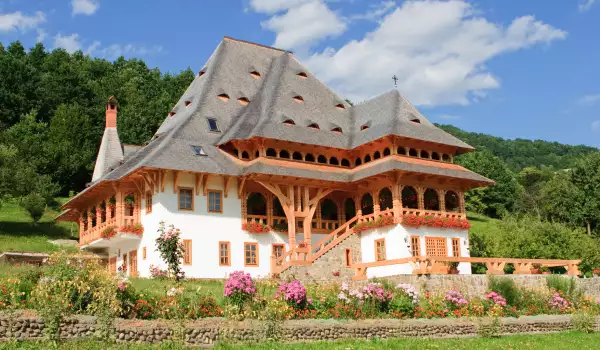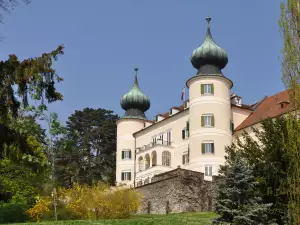Barsana Monastery

Barsana Monastery is a complex of unique structure built entirely of wood. The wooden Barsana Monastery is situated in a village in the valley of the Iza River, in the Romanian Maramures Region, in Northern Transylvania. The wooden buildings in Maramures are among the most important Romanian Antiquities, the Barsana Monastery is a relatively new construction.
Barsana is a working monastery with 16 nuns. It was created in post-communist years on a site abandoned in 1970. Over time, the complex became an important religious and cultural attraction. With its 56 meters height monastery, Barsana is supposedly the highest wooden building in Europe.
The church itself is quite dark inside - it is low and there are no windows, so that inside the temple is quite dark. The name comes from the Romanian word bârsan, which means shepherd who raises sheep for wool. In the Middle Ages, it became a common surname.
The village itself dates back to 1326. In documents from 1326 and 1346, it was mentioned as the property of Prince Stanislau, the son of Stan Bârsan. In a document of November 6, 1405 we read about the monastic community that has existed for several centuries. In 1802 the until then unused wooden buildings were moved to the center of town.
Today, the temple is located on a small hill, surrounded by an orchard. This is actually a mound of old graves, covered with grass. It is one of eight churches in Maramures, which are included in the UNESCO list of world cultural heritage sites. Barsana Monastery was built of large and thick oak beams on stone foundations.
The first church was built in 1720 and was painted by local artists Hodor Toador and Ion Plohod. Today, it is worshiped by many pilgrims throughout the year. It is a small one-nave church. In front of the west façade, a porch is located on two levels, each with pillars, which are with rounded arches. The porch was added in 1900. There is a roof with two roof eaves for the main church, while above the altar is only one roof.
The windows of the monastery are extremely small and are added at the time the hall is built. The murals of the temple are very beautiful, they are painted in baroque and rococo in the last quarter of the 18th century. The predominant colors are white, blue, red and golden amber. They are highly appreciated by UNESCO.















